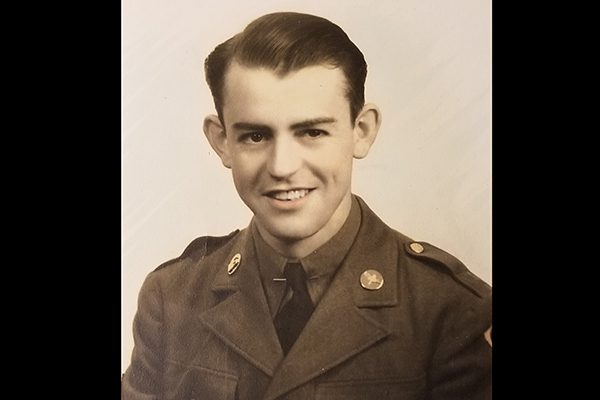John Nolan Culp

“It was very, very rare for him to lose his temper and he rarely said anything against the Japanese. He was always the Southern Gentleman. The family really did not know a lot of what happened until he was in his 70s.”
– Charlene Knop, mother of Dawne Knop ’16
John Nolan Culp, remembered by his granddaugher, Dawne Knop
Bataan Death March survivor John Nolan Culp endured much as a prisoner of war in the Philippines.
John Nolan Culp joined the Army Air Corps in 1940. A member of the 27th Bombardment Group out of Savannah, Georgia, he was sent to the Philippines in fall 1941. The group arrived in time for Thanksgiving. Pearl Harbor occurred on Dec. 7, 1941, and Manila, Philippines, was bombed five hours later on Dec. 8.
Technical Sergeant (TSGT) Culp, an aircraft mechanic, helped piece together what was left of American planes in the Philippines. Since most of the planes that were to be delivered to the 8th Air Force had not arrived, this was a real challenge. By the end of December, General MacArthur ordered the withdrawal of all American troops from Manila and declared it an open city (meaning all defensive efforts were abandoned). TSGT Culp was among those men who were evacuated to the Bataan Peninsula.
The Battle of Bataan began Jan. 7, 1942, and lasted until April 9, 1942, when Gen. Edward King, Jr., (Commanding General of the Philippine-American forces on the Bataan Peninsula) surrendered. His soldiers had not received any supplies since withdrawing to the peninsula, and they no longer had ammunition or food.
The Bataan Death March began on April 10, 1942, and approximately 22,000 men, of whom at least 10,000 were American, were forced to San Fernando, where they were loaded into enclosed boxcars and sent to Capas Train Station, where they were again marched to Camp O’Donnell. This trip took 10 days and approximately 650 men died during this time. Many men were executed by beheading or having their stomachs sliced open; some were beaten, and they were not allowed to rest or to have food or water.
TSGT Culp made it to Camp O’Donnell and was one of the few survivors of Zero Ward at Cabanatuan. Other prison camps he endured were Bilibid Prison and Cabcaben Prison Camp. During his years as a prisoner, he watched friends die and buried many of them. He was starved and repeatedly beaten, and he suffered from beriberi, pellagra, dysentery and numerous other ailments. When he first arrived in the Philippines, he weighed approximately 160 pounds and was 5’10” tall. When TSGT Culp was rescued, he weighed 86 pounds and stood only 5’7”.
Along with the other prisoners, he was sent back to the United States for rehabilitation. He was hospitalized for more than six months before being released. He lived with these years of torment the rest of his life and relived the march in the 10 days prior to his passing.